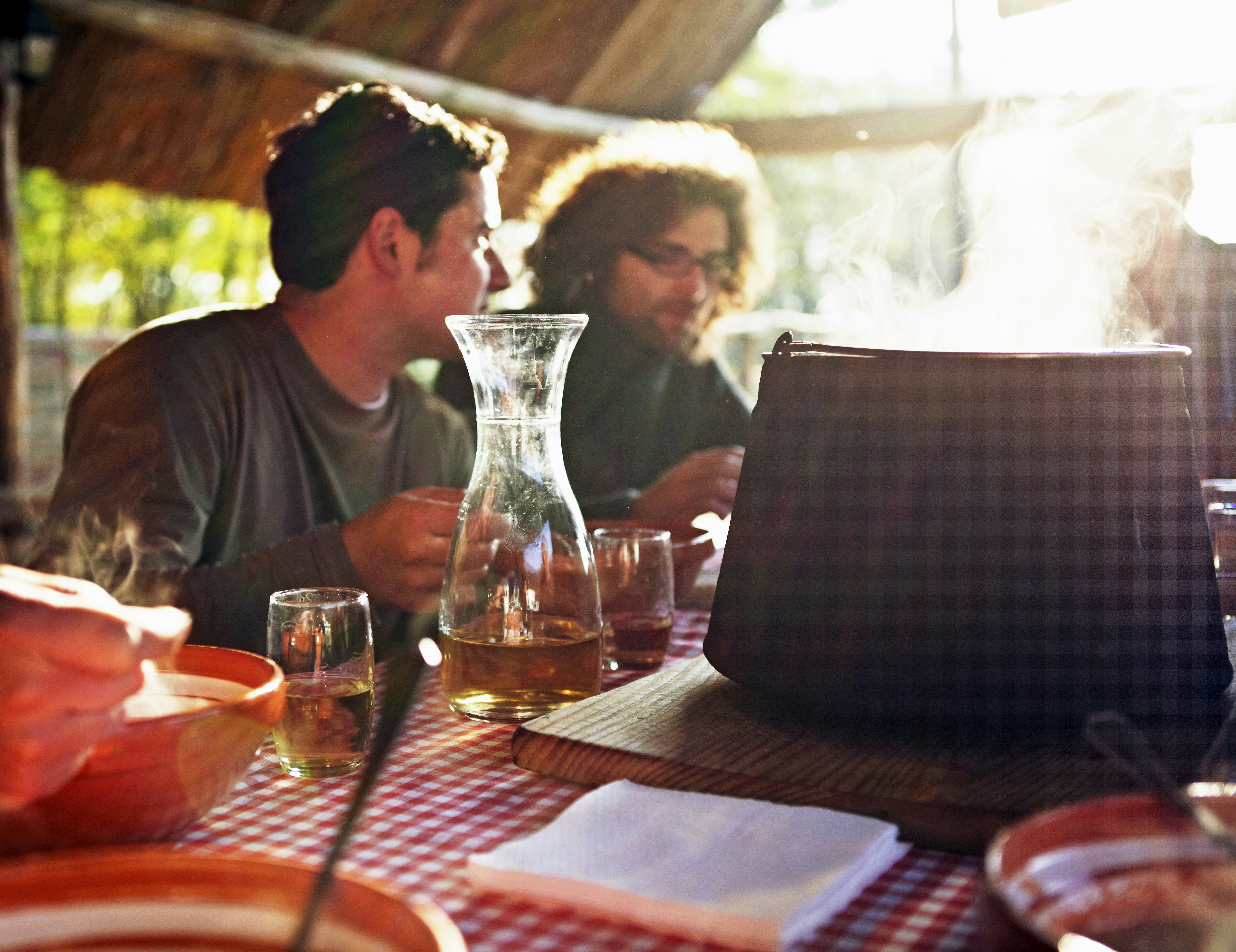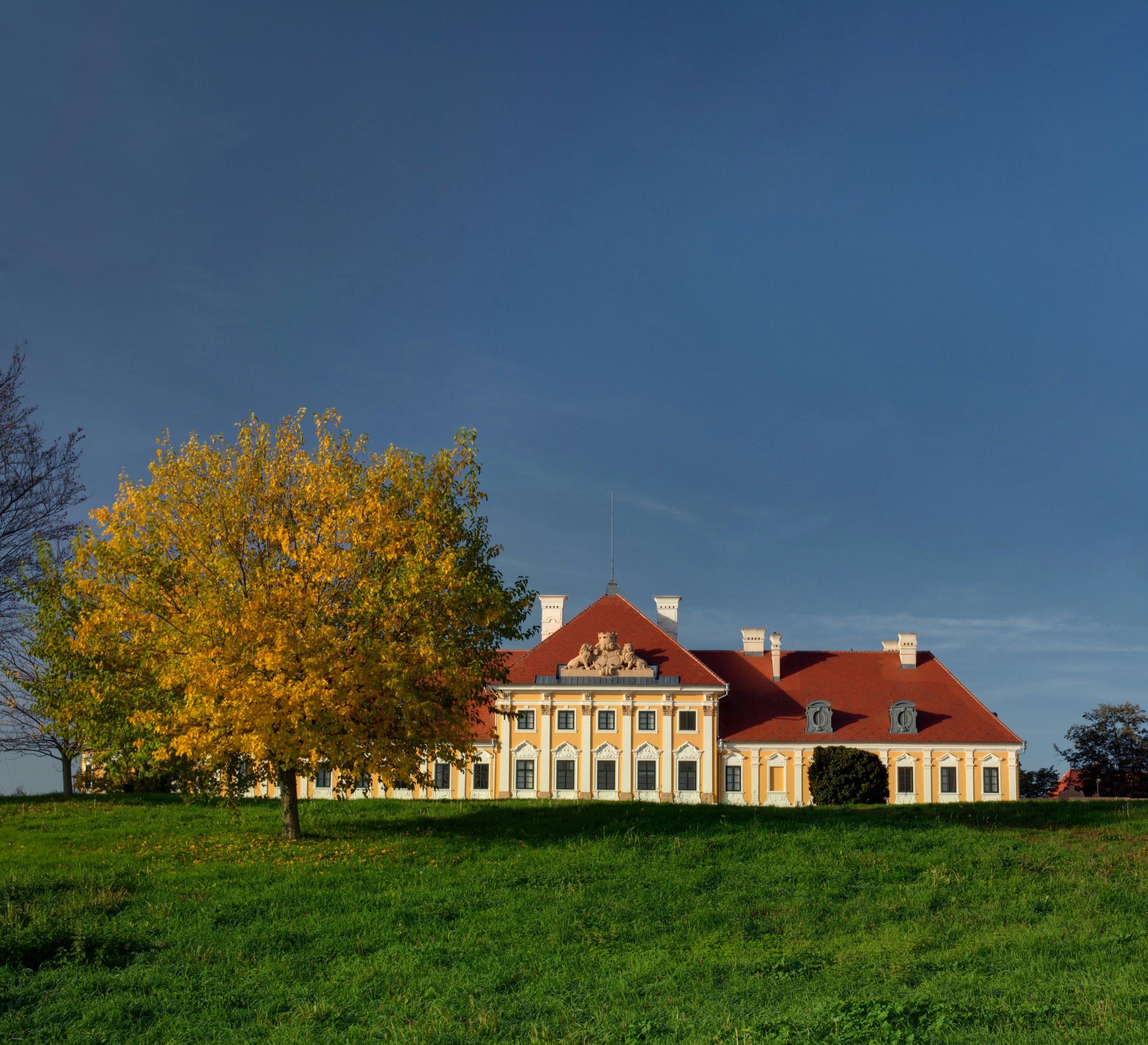
Why food and culture fans need to explore inland Croatia
Sponsored by
Oct 16, 2020 • 4 min read

Holy trinity square in the historic town of Osijek, Croatia is a highlight of the Slavonia region © iascic / Getty Images
Croatia’s long, stunning coastline is no secret to travelers across the globe, but those looking for culture and gastronomy should head inland to Slavonia.
Slavonia is a hidden gem in the northeastern part of the country, that was once submerged under the Pannonian Sea – in fact Croatia’s first geopark, Papuk, is one of the remnants of the Pannonian islands.
Slavonia is one of four historical and cultural regions in Croatia and provides rare insight into early European civilization. Here’s four fascinating things to do in this vibrant region:

Visit the Vučedol Culture Museum
Located on the bank of the Danube River 3.5 miles from Vukovar, the Vučedol Culture Museum (Muzej Vučedolske Kulture) is dedicated to the prehistoric population living in the area during the Eneolithic period – the Copper and Bronze Ages – from 3000 B.C. to 2500 B.C., about the same time the Egyptian pyramids and Stonehenge in England were built and the ancient city of Troy was founded. Vučedol is considered one of the most important archaeological sites in Europe and is thought to have been inhabited as early as 6000 B.C.
At the museum, learn about the first Indo-European Vučedol house, the oldest prehistoric four-wheel cart, the oldest Indo-European calendar based on observation of the winter sky and the prehistoric foundations of the first metal production, including the first production of bronze in the world and the first-ever saw.
The rooms are themed, based on the geology of Vučedol, the cultural foundation, the arrival of Indo-Europeans, livestock breeding, farming, hunting and fishing, weaving and clothing, handcrafts and footwear, metallurgy, ceramics, and chronology. The museum also features hands-on experiences and interactive audio and visual aids via a free smartphone app for iPhone and Android.

Sample the regional cuisine of Baranja
There’s a popular saying in the area that roughly translates to “Everything can happen to you in Slavonia and Baranja, but you will never go hungry or thirsty.” Known for its savory dishes and large portions, this pocket of Croatia features many highly rated restaurants serving the traditional cuisine of Baranja. Try the rich regional cuisine, which features a lot of catfish, carp, pork, beef, potatoes and fresh vegetables.
One of the most popular dishes is Drunken Carp (pijani šaran). It is prepared by cleaning the fish, salting it, stuffing it with garlic and baking it in lemon juice, wine, oil and rosemary. Čobanac, another local favorite, is a meat stew prepared by slowly cooking everything together for several hours in a large copper pot strung over an open fire. It’s made with various meats –veal and beef are favorites – and mixed with onions and hot ground paprika.
It’s hard not to notice the Hungarian influence in the cooking when you’re in Slavonia and Baranja, which makes sense given its historical ties to the Austro-Hungarian empire and through the use of ingredients including paprika, as well as lard, black pepper and garlic.

Tour Vukovar’s 18th-century Eltz Palace
Eltz Palace was built during the mid-1700s during the Habsburg Empire by Philipp Karl von Eltz-Kempenich, the Archchancellor of the Holy Roman Empire. His descendants lived there until 1944 when the property was confiscated during World War II.
The museum was founded in 1948 with the collection of the Vukovar Town Museum, but the palace was destroyed in 1991 during the Croatian War of Independence. It was restored to its pre-war glory after a long renovation and reopened to the public in 2015 as the Vukovar City Museum and Eltz Castle Complex as part of the Government of the Republic of Croatia and the Council of Europe Development Bank Project.
Located on the riverbank of the Danube, the building is said to be the most beautiful example of the Baroque period in Croatia. There are four floors to explore, featuring artifacts from mammoth fossils to bronze age tools. A video exhibit plays moving footage of the siege of Vukovar and the town’s destruction.
Visitors can also see some of the rooms where the Eltz family lived as well as a historic collection of Vukovar’s past, such as paintings, furniture and clothing. Guided English language tours are available daily.

Taste some of Ilok’s finest wines
Situated on the hill of Fruška Gora and lying on the banks of the Danube River, the medieval town of Ilok is the easternmost town in Croatia and a burgeoning paradise for wine lovers.
Ilok is home to many vineyards that produce Chardonnays, Rieslings, Pinot whites and Gewürztraminer varietals and is one of the best places to taste wine in Slavonia. Take a full- or half-day tour of The Ilok Wine Road to visit family-owned wineries, walk the surrounding vineyards and taste their unique flavors.
Ilok Castle, also known as Odescalchi Castle, was built by Nicholas of Ilok, Croatian Viceroy and the King of Bosnia, in the 15th century. Today, you can tour the 500-year-old underground wine cellars and visit the Museum of the Town of Ilok there. On the cellar tour, you’ll see large oak casks and wine collections almost 40 years old, and hear stories about heroic efforts to save vintage wines during the 1991 war.
After your tour and wine tasting, don’t miss the chance to dine at the connected restaurant. It’s housed in a huge historical feasting hall and serves an excellent fish paprika dish.
You might also like
What not to miss in Rijeka, European Capital of Culture 2020
Cycle through Italy, Slovenia, and Croatia on the historic Parenzana Trail
Foodie experiences in Istria, Croatia's gastronomic paradise
Sponsored by Croatian National Tourist Board
As a travel entertainment and inspirational media outlet, we sometimes incorporate brand sponsors into our efforts. This activity is clearly labeled across our platforms.
This story was crafted collaboratively between Croatian National Tourist Board and Lonely Planet. Both parties provided research and curated content to produce this story. We disclose when information isn’t ours.
With sponsored content, both Lonely Planet and our brand partners have specific responsibilities:
-
Brand partner
Determines the concept, provides briefing, research material, and may provide feedback.
-
Lonely Planet
We provide expertise, firsthand insights, and verify with third-party sources when needed.















